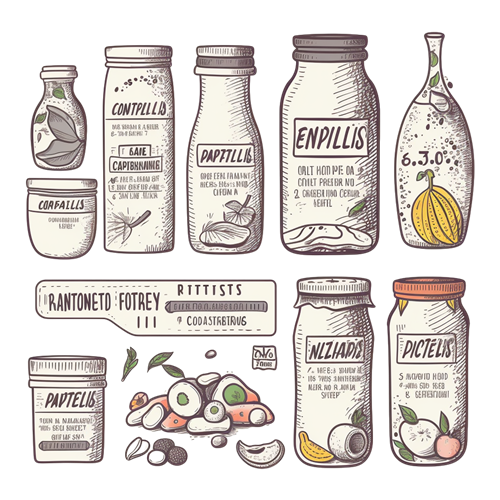In day-to-day life, you’ve likely heard marketing slogans like: “Our product has a clean ingredient list – no added sucrose or preservatives, making it safe for both the elderly and children.”
Businesses often use these claims to create a perfect image of their products. When consumers see labels such as “不添加蔗糖 (no sucrose added)” or “不添加食品添加剂 (no food additives)”, they subconsciously assume the product is of high quality. However, sucrose is not the only type of sugar, and food additives are not necessarily harmful.

Recently, China's State Administration for Market Regulation (SAMR) released three updated regulations:
- Food Labeling Supervision and Administration Measures;
- GB 7718-2025 General Standard for the Labeling of Prepackaged Foods; and
- GB 28050-2025 General Standard for Nutrition Labeling of Prepackaged Foods
These regulations (effective from March 16, 2027) impose stricter limitations on misleading label claims. For example, terms like “零添加” (no additions) or “不使用” (not used) will be prohibited. Below are the key highlights compiled by CIRS Group to help businesses understand and adapt to these changes.
GB 7718-2025 – General Standard for the Labeling of Prepackaged Foods
Requirements:
- When using terms like “无” (none) or “不含” (not containing), the corresponding content of the ingredient or component should be reported as “0”.
- Additives, contaminants, or substances prohibited by law or standards cannot be described with terms like “无” or “不含”.
- Prohibits claims such as “不添加 (not added)”, and similar expressions. Here are some common synonyms for “不添加” in Chinese: “未添加”“零添加”“无添加”“未使用”“没加”“没用”“没使”“没使用”“未用”.
CIRS Reminder:
- Unless specified otherwise in GB 28050 or similar standards, when using claims like “无” or “不含”, the corresponding content of the ingredient or component should be reported as “0”. If a standard testing method for a certain ingredient or component specifies a detection limit, the test result should be reported as “未检出 (not detected)”.
- Popular marketing phrases like “no preservatives” or “no sucrose added” are explicitly banned. This will simplify regulation and prevent consumer confusion.
Requirements:
If a certain ingredient or food flavor is created solely using food-grade flavoring or essence, only illustrations or images other than real photos of the actual ingredient or food may be used, with a visible label stating “图案仅供口味参考 (for reference only)”.
CIRS Reminder:
If a product’s flavor comes solely from food flavorings or essences (not real ingredients), it cannot use real ingredient photos. Instead, it may use cartoon illustrations.
Food Labeling Supervision and Administration Measures
Requirements:
If a certain claim is not supported by laws and regulations, the food label must not claim “适合未成年人食用 (suitable for juveniles)”.
CIRS Reminder:
Aside from specific products like formulated milk powder for children, most foods lack legal backing for claims such as “suitable for children,” e.g., children’s soy sauce or infant drinking water. Businesses should update such labels as soon as possible.
Requirements:
If a health food label uses an additional trademark beside the registered brand name, its size must not exceed 25% of the product name area and it must be smaller than the main trademark. It must not be combined with the product name or create the impression of being part of it.
CIRS Reminder:
For businesses that add an additional private label to health food packaging, attention should be paid to the size of the added trademark. It should not be used in conjunction with the product name and is recommended to be placed in a corner position.
GB 28050-2025 – General Standard for Nutrition Labeling of Prepackaged Foods
Requirements:
- All prepackaged food must list Energy, Protein, Fat, Saturated fat (or saturated fatty acids), Carbohydrates, Sugars, Sodium, and the percentage of Nutrient Reference Value (NRV) for each.
- Labels must include “儿童青少年应避免过量摄入盐油糖 (Children and adolescents should avoid excessive intake of salts, oils, and suger)”
CIRS Reminder:
Businesses should adjust nutrition labels during the transition period and may use this as an opportunity to develop low-sodium and low-sugar products.
These new regulations will eliminate many label claims that previously operated in gray areas. Companies must self-audit and handle claims cautiously to avoid being targeted by professional whistleblowers or penalized by market regulators. Food Labeling Supervision and Administration Measures encourage food producers and sellers to engage third-party compliance experts to evaluate their labels for regulatory adherence.
About CIRS Food Division
Established in 2012, the Food Business Division of CIRS Group has helped over 1,000 food companies globally in achieving one-stop compliance solutions. CIRS offers a full range of regulatory services, including but not limited to China novel food applications, synthetic biology-derived foods, US GRAS notice, EU novel food application, health food registration, and food for special medical purposes (FSMP).
If you need any assistance or have any questions, please get in touch with us via service@cirs-group.com.
Further Information
China New Labeling Regulations for Health Food: How Should Labels Be Displayed?

